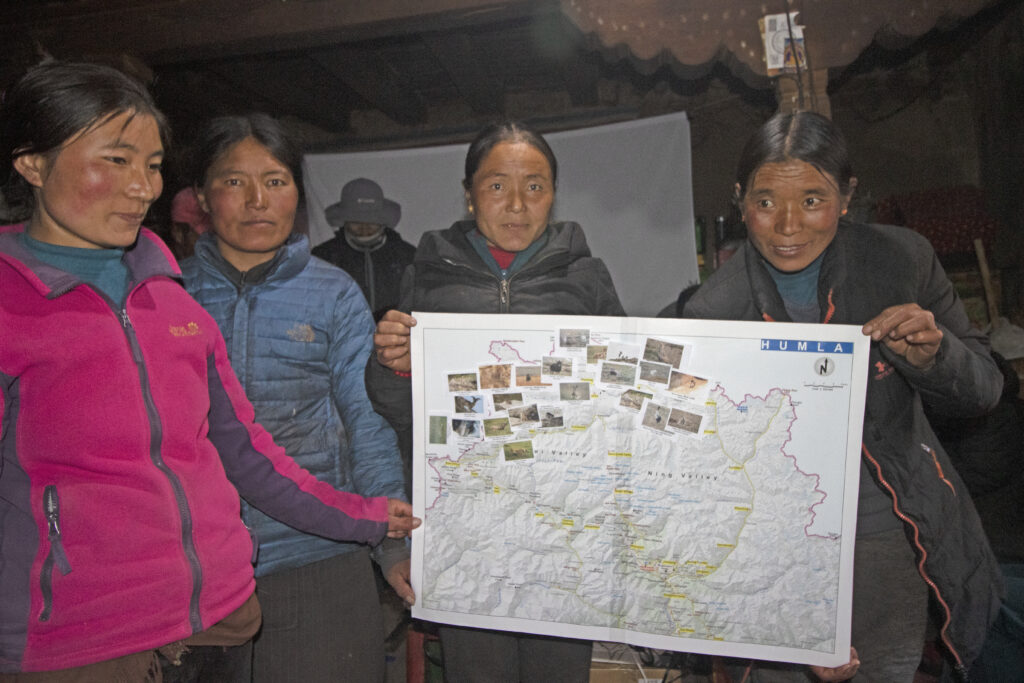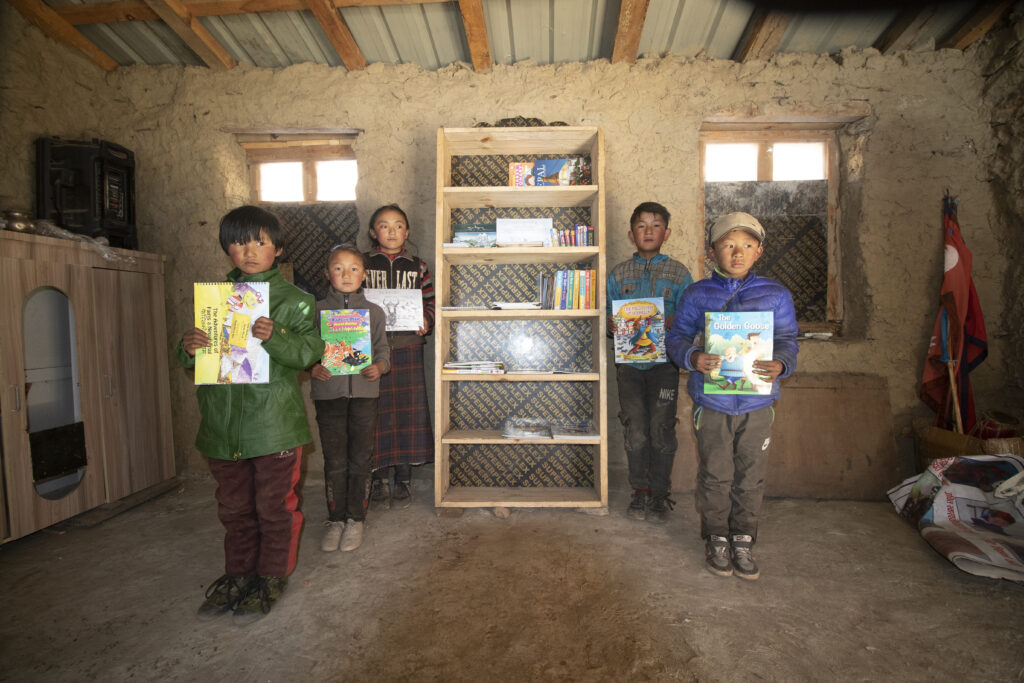Conservation Workshop and Wildlife Monitoring Training 2021
During July-August 2021, we worked in full swing to prepare the contents for the conservation workshop and wildlife monitoring training, planned for the month of November. We were busy producing presentations, banners and certificates, group activities, board games and educative posters, and simplified manuals on camera traps, Global Positioning System (GPS) devices, scale compass and binoculars.
Winter snow was not expected until December. But the weather showed a sudden change in mid-October. Many places in the high Himalayas of Nepal received heavy snowfall, closing most of the mountain passes. A group of tourists, stranded in Limi, was rescued by helicopter.
The weather gradually improved. By the first week of November, local people had crossed the snow-laden Nara lagna (4510 masl) multiple times again. The weather forecast showed no snow until December. So we flew to Humla for our community conservation work.
The early heavy snow fall had damaged the trail at multiple locations. We relied on mules, yaks, and local porters to transport our duffel bags to Limi.
Limiwas (the people of Limi) know us from our research work of the past years. We had informed them in advance about the workshops and trainings planned as part of our conservation project. We received a warm welcome in the villages.
The weather was cold. However, the cheerful faces of the local villagers warmed up our hearts once the workshops commenced. They occasionally expressed pleasant surprises over all the new information on the wildlife wealth of their area and the important (but often unappreciated) roles of those animals in maintaining the ecosystem health. The participatory mapping of the Transhimalayan valleys (in relation to wildlife) promoted a sense of belonging among the participants. Unsurprisingly, the participants loved the screened documentary films (conservation-related). While we managed to show the power-point slides and the documentary films in a cloth-screen through a projector in two villages, we had to rely on the flex prints of the slides and our laptop in other villages. To make sure that we relay our message in the most understandable form for the local people, we had prepared all the materials in English and Nepali and our field officer translated the contents into the local Tibetan language.
The school workshops were even more fun. We relayed conservation messages to the students with the help of self-designed games that were based on our new book titled ‘The Web of Life: A Transhimalayan Animal Adventure’. We divided the students into groups of appropriate sizes, each led by a teacher who explained the story to the group. The teachers admitted that they were impressed by our method of relaying important information to the students in a playful manner using the board game and dragon-ladder game (modified from snake-ladder game). And it was just wonderful to see the happy faces of the students as well as the teachers when we installed the mini-libraries in the schools with books from different fields including science, health, conservation and natural history.
The wildlife monitoring training sparked substantial interest among the local youths towards exploring wildlife around their villages. We selected three to five youths from each village to form a Community Conservation Group (CCG) and trained them on the use of camera traps, GPS devices, binoculars and scale compass and also taught them on filling up the data sheets. We provided each CCG with copies of the ‘handbook of manuals’ we had specially prepared for their use. The illustrated manuals with simplified texts in Nepali and English will serve as valuable references for the CCGs. Soon after the training, the CCG of each village installed camera traps in places that are most likely to record important wildlife. As we sit down to reflect on the training, we are filled with an emotional delight to see images of a snow leopard (sent to us in an email by a CCG member) captured in the camera traps set by one of the CCGs.
Everyone had been worried that we would get stranded in Limi if it snowed again just like in October. But the weather was on our side. We were just in time to cross Nara lagna on our way back. Two days later it snowed heavily!
Back in Simkot, we met with one of our mule drivers from the last research expedition. He had just returned appearing in a written examination for ‘forest guard’. He was very proud to tell us that the time he had spent with us on our research expedition during July-August 2021 had motivated him. We are extremely happy to realize that we are slowly but steadily able to inspire positive changes.
The collaborative support provided to us by the Division Forest Office, Humla and the Office of Namkha Rural Municipality kept us motivated throughout the trip. This field trip was part of our larger three year conservation project. We are very thankful to Fondation Segré for believing in our work and funding this conservation project.














